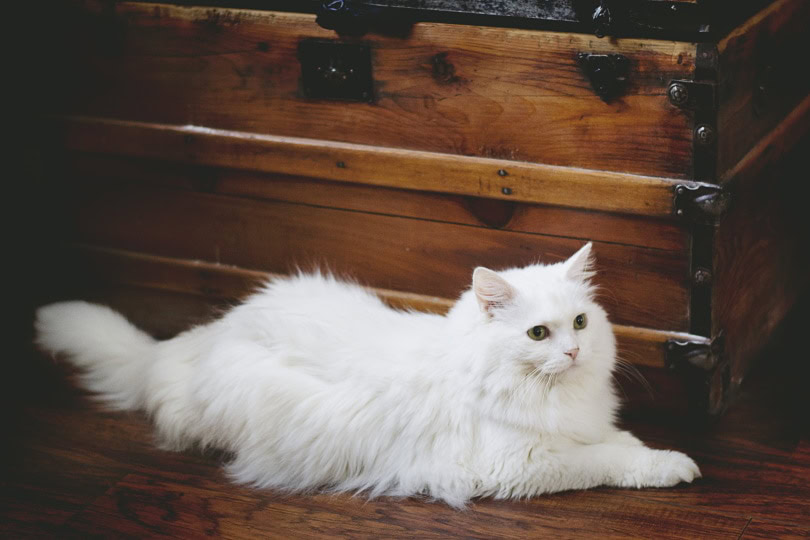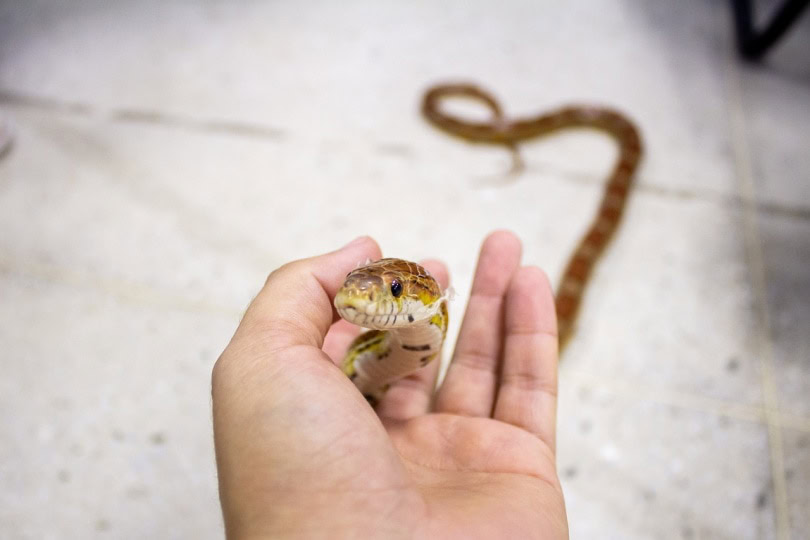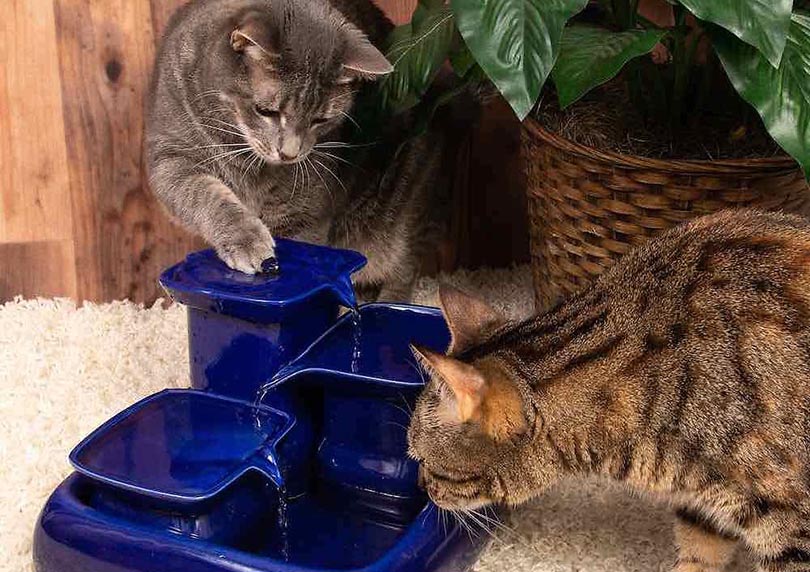Our cats certainly know how to get a reaction out of us, whether it’s not being able to resist that adorable face that needs a good scratching or dealing with the aftermath of your cat jumping up on the counter and knocking over your favorite vase.
If you want to keep your cat out of a specific room or off your dining room table, we have 10 safe methods for you to try. Whatever your reasons are, some of these tricks should be effective enough to keep your cat away from any room or location that you want, but not all of them will work for every cat. Some cats will tolerate the deterrents better and may get used to them over time, meaning you will need to keep finding new ideas.

The 10 Ways to Keep Cats Away from Certain Areas
1. Don’t Give Your Cat Attention
One of the most important things to do is not to give your cat any attention when your cat goes into the area or starts an undesirable behavior. Your attention is exactly what your cat wants, even if it’s negative, so giving your cat what they most desire is almost like a reward.
If you ignore the behavior, your cat will probably get bored and find something else to do (hopefully, not another undesirable behavior). It’s not always practical, however, to ignore the behavior, so you’ll want to do this in conjunction with some other methods.
2. Keep Doors Closed
If your cat is wreaking havoc in a room, do the obvious thing and keep the door closed. If your cat is particularly sneaky, ensure that you quickly close the door behind you when entering and exiting and make sure the entire family does the same.
If the room doesn’t have a door, install one or put up a barrier that your cat can’t get through. If your cat isn’t especially athletic, you might be able to use a simple pet gate.
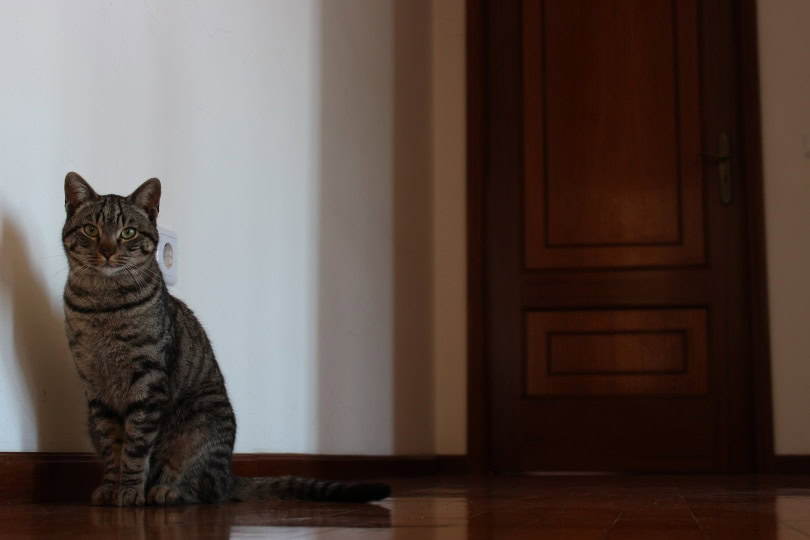
3. Scent Deterrents
You can also use a scent that your cat dislikes in an area. This will make the space unattractive to cats, and they might go out of their way to avoid it. However, make sure not to use any harmful or toxic substances in the process.
Scents that cats tend to dislike include:
- Citrus fruit (lime, lemon, orange, grapefruit)
- Cinnamon
- Vinegar
- Rosemary, thyme, rue
You can purchase deterrents online or make your own. Be aware that essential oils are toxic to cats and should not be used as deterrents.
It’s usually safest to go with commercially made pet deterrents because these are made to be safe around pets, such as a noise and scent spray that uses pheromones.
4. Sound Deterrents
Cats dislike sudden and loud noises! However, it’s best if your cat doesn’t actually see you make the noise. For example, if the area that you want to prevent your cat from going on is your kitchen counter, clapping your hands or yelling won’t work.
You need to be sneaky, so try putting stones, dry beans, or coins in a jar or can. When your cat jumps on the counters, shake the jar, but don’t let your cat see you do it. You want your cat to associate an unpleasant experience with the counter, not with you.
There are also motion detector sound deterrents that can be set up on surfaces and will make a loud hissing sound when your cat goes near it. This will startle your cat away without you clearly making the noise. However, some cats will get used to the noise and may not be deterred by this method alone.

5. Taste Deterrents
If the area that you want to keep your cat out of is due to your cat chewing on things, you can make these things taste bad. There are anti-chew bitter sprays available that can be used on surfaces, such as furniture, but make sure to test it on a small area first, in case it would lead to damage or discoloration.
6. Touch Deterrents
To keep your cat from scratching or jumping on your tables, you can use things like double-sided sticky tape for these surfaces (cats dislike sticky stuff on their paws).
You can also try things like aluminum foil placed on a surface or on the floor near the place that you want your cat to stay away from. Many cats don’t like the feel or sound of aluminum foil on their feet.

7. Uncomfortable Area
If you make the area uncomfortable for your cat, there will undoubtedly be less interest in it. For example, if you want your cat to stop going into a specific room, play loud music and spray an unappealing scent in it. If the area isn’t welcoming for your cat, they won’t have the same attraction to it.
8. Redirection
When your cat starts heading in the direction of the place that you want them to avoid, just use redirection. Even if the cat just starts to look at that spot, start playing with or petting your cat as a way to distract them from it.
You should ensure that your cat has plenty of enrichment toys and fun places to play in, such as cat trees, high perches, and other spaces that will make them happy. If you spend enough time playing with your cat, and there’s a comfortable and entertaining space always available, the undesirable behavior won’t happen as often (or at all).
Cats are much like toddlers and would prefer negative attention from you than no attention at all. When cats see you reacting every time they jump on the table, they’re getting exactly what they want. So, give them what they want, but only when they aren’t going to that forbidden place.
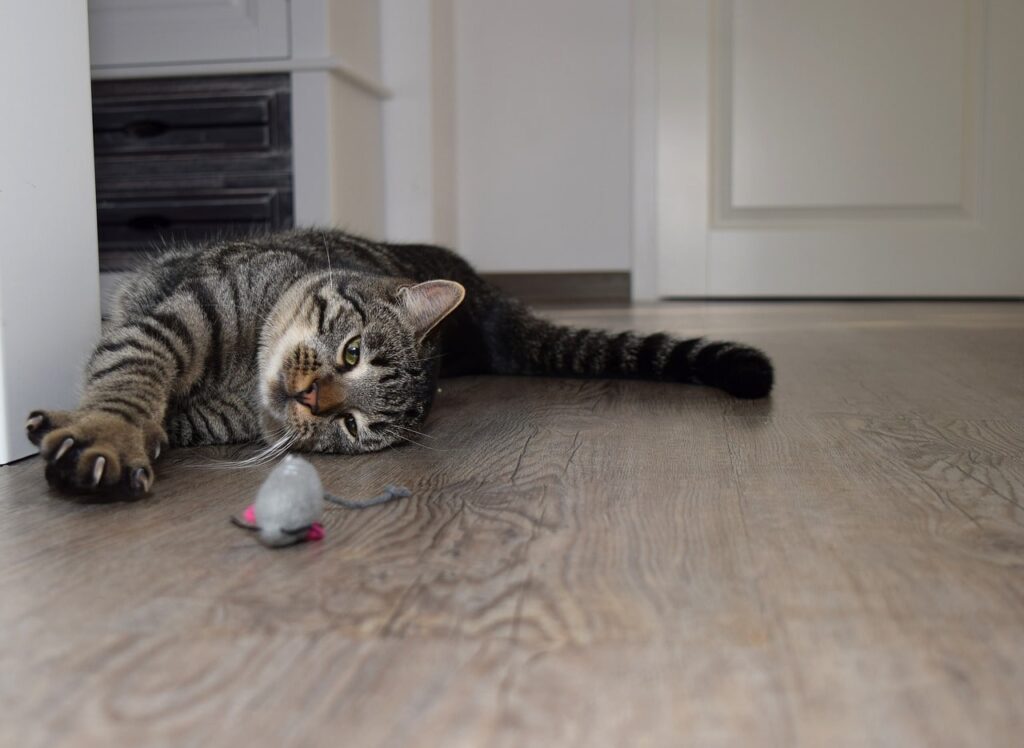
9. Be Consistent
Once you start enforcing these rules, you need to be consistent, or your cat will never learn. If you’re trying to keep your cat out of a room, you must not ever let your cat in this room at any time. If you occasionally allow your cat in but then deter them at other times, this will only prove to be confusing.
You should also be clear with anyone else in the household about the rule. If your children allow your cat in the forbidden room, this is not consistent. Be sure everyone is on the same page.
10. Don’t Use Punishment
Punishing your cat will only reinforce your cat attempting to go to that space. You’ll break your bond, and your cat will fear you and won’t associate the punishment with the behavior. Cats are smart, but they can’t understand why you’re yelling (or worse).
Just keep a cool head, and remember that positive reinforcement, with praise, treats, patience and love are the best methods when working with your cat.
Training will play a major role in setting boundaries for your cat, and if you need a few pointers on how to set these, a vet is a great source of information.

Conclusion
Be prepared to be sneaky. If you opt for deterrents that you need to set off yourself, you’ll need to do so without your cat seeing you. Shake that jar or spray that scent when your cat isn’t looking, or you will be associated with the deterrent rather than the room, the counter, or the furniture.
Remember that not all these methods will work for each cat, so you might need to try out a few different techniques until you figure out what will work for your cat. We hope that by following our methods, you’ll find one that works for your cat, and your extra playtime and attention will keep your cat happy enough to forget all about that forbidden area.
You may also want to read:
Featured Image Credit: Piqsels
